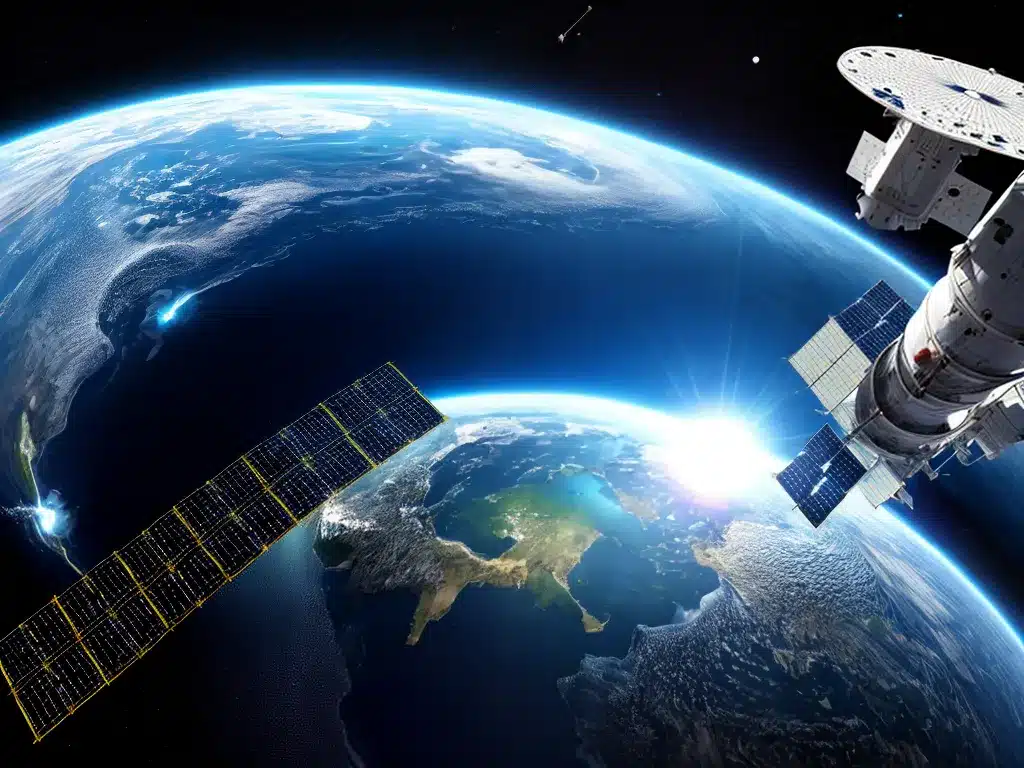
The Internet of Things (IoT) is transforming industries across the globe, and the space sector is no exception. Connecting satellites and orbital infrastructure with intelligent sensors and communication systems opens up new capabilities in space-based services and exploration.
How IoT Enables Next-Generation Space Systems
The core concept behind IoT is the connection of physical objects like sensors, devices, and vehicles to the internet and to each other. By integrating advanced computing and communication technologies, these objects can collect, exchange, and analyze data to enable intelligent automation and real-time decision making.
IoT allows satellites and other space infrastructure to become more capable and efficient. Here are some key examples:
-
Sensors on satellites can provide real-time telemetry on the health and status of onboard systems. Ground stations can then use this data to identify issues early and improve satellite maintenance.
-
Inter-satellite communication allows satellites to coordinate activities and share information directly without human intervention. A satellite relaying data from an imaging satellite to Earth is one example.
-
Automated failure detection and recovery uses IoT connectivity to identify anomalies and trigger corrective procedures without controllers on the ground needing to get involved. This increases the autonomy of satellite fleets.
-
Software-defined satellites that leverage IoT can be reconfigured through software updates, reducing the need for physical maintenance. New capabilities can be added over time.
Key Use Cases for IoT in Space
Here are some of the key use cases and benefits of deploying IoT capabilities on satellites and supporting infrastructure:
Satellite Telemetry Monitoring
-
Sensors across critical subsystems like power, propulsion, and control can provide detailed telemetry on status and performance.
-
Data can be aggregated in an onboard IoT gateway and transmitted to ground stations for monitoring.
-
Analytics can flag anomalies early for investigation or trigger automated corrective actions.
-
Provides comprehensive insight into satellite health for predictive maintenance.
Autonomous Satellite Clusters
-
Groups of satellites like those in mega-constellations can network together to coordinate activities.
-
Peer-to-peer communication allows orbits, imaging tasks, and data relay to be deconflicted without human control.
-
IoT connectivity facilitates collaborative behavior between satellites for greater fleet efficiency.
-
Edge computing power on each satellite enables distributed data processing.
Dynamic Ground Station Management
-
Software-defined radio techniques allow antennas to flexibly connect to any satellite.
-
Real-time telemetry on ground station status and orbital position of satellites guides intelligent tasking.
-
Automated beam steering and band switching optimizes communication links.
-
Enables more efficient utilization of ground station networks.
Implementing IoT in the Space Environment
While promising, deploying IoT in space comes with unique challenges:
-
The space radiation environment can damage electronics and disrupt wireless communications. IoT devices must be hardened.
-
Satellite and ground station tracking requires highly directional antennas to overcome path losses.
-
Power and processing constraints on satellites require efficient IoT architectures.
-
The long lifecycles of satellites, often 5-15 years, requires compatible IoT technologies.
-
Security is critical to prevent unauthorized access or control of space assets.
Despite these challenges, the use of IoT in space is accelerating given the substantial benefits. With the commercialization of space and trends like satellite mega-constellations, IoT will be a core enabler. Continued innovation in low-power sensors, secure wireless networking, and space-rated electronics will unlock the full potential of IoT to transform future space infrastructure.
Conclusion
The unique benefits of IoT are well-matched to the cutting edge needs of satellites and orbital platforms. By enabling real-time telemetry, autonomous operation, and intelligent connectivity, IoT can make space systems safer, more efficient, and more capable. Challenges exist in implementing IoT in the harsh space environment, but the momentum toward digitization and automation in space will help drive adoption. With continued technological advances, IoT is poised to be a game-changer for the new space economy.












